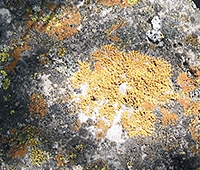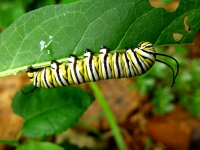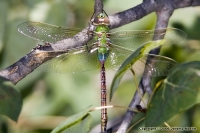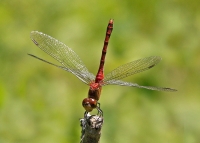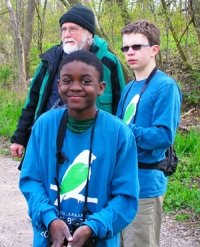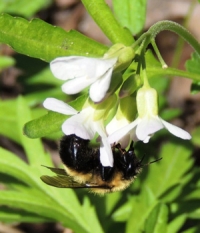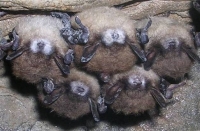
Darwin, Franklin and You
What do Charles Darwin, Benjamin Franklin and our summer interns have in common? They are CommunityScientists! A Community Scientist is someone who engages in the research process in a non-academic setting. People are often surprised to learn that anyone can participate in our research projects, regardless of their age, background or previous experience. All you need is a passion for the natural environment. Community Science volunteers at the Center work with bats, birds, bugs, frogs and toads, small mammals, snakes, turtles, insects, plants and more!
Research & Citizen Science Highlight: Lichens!
Lichens are the ultimate example of collaboration in the natural world. If you're not familiar with this group of organisms, perhaps this joke will clue you in: Why did the fungus and the algae get married? Answer: They took a lichen to each other! If you've heard this joke before, you're probably groaning and rolling your eyes. If you haven't, I hope you're intrigued.
Introducing the Riverside Park Junior Citizen-Scientist Research Team!
We're looking for youth ages 7-13 years old who are interested in science and nature, love learning and playing outside, and enjoy asking questions and discovering answers. The subject for our team's important project? You might recognize them as a kind of striped catepilar, but to scientists they're monarch larvae!
Native Animal Spotlight - The Common Green Darner Dragonfly
The Common Green Darner (Anax junius) is a lovely migratory dragonfly that visits Wisconsin from April through September. This native invertebrate is Wisconsin's most common large dragonfly. The male has a bright bluish-green abdomen and is sexually dimorphic from the female whose abdomen ranges from brick-red to bluish gray. They have four gossamer wings, heavy thoraxes and are about the size of hummingbirds. They are extraordinary fliers; flying forward, backward, while mating and even while laying eggs! Their flight is so incredible that aeronautic scientists have studied them to better understand flight physics.
How to Get Involved in Dragonfly and Damselfly Research at the Center
What other group of animals besides birds can you identify through binoculars, take colorful photographs of during the summer and track their migration in the spring? If you answered dragonflies and damselflies, you would be correct! Wisconsin is home to over 160 species of dragon and damselfies and summer is the time to monitor for these fast-winged, brilliantly- colored invertebrates. This year, two of the Center's Advanced Outdoor Leaders, Ethan Bott and Humzah Abdullah, will be leading the Odonata (the scientific group name for dragonflies and damselflies) Surveys with the help of volunteers from the Wisconsin Odonata Survey and the Wisconsin Dragonfly Society. Ethan and Humzah recently attended an Odonata workshop at UW-Waukesha led by experts from across the state. The following narrative is Humzah's summary of the workshop:
Green Birding Challenge 2013: A Huge Success!
The Green Birding Challenge is a friendly birding event to celebrate International Migratory Bird Day (IMDB) and raise money for Community Science programming at the Urban Ecology Center. We had 12 teams compete in four categories (walking, sitting, biking, and a mini-challenge). Teams recorded 112 species of birds and raised over $4800. This year, 10 Young Scientists from Washington and Riverside Park participated in the mini-challenge! Winners received trophies and experiential trips (canoe trip, hawk-watching trip, etc.) and the team with the fewest birds found received a free trip with the research team to work on bird identification skills.
May Phenology: 2013 Re-emergence of Frogs, Bees and Flowers
Every new day in May brings out plants and critters that re-emerge after their winter absence. Warmer temperatures and longer days allow plants to re-emerge from soil and leaves and flowers to burst forth from trees. These provide food for insects, which are food for frogs, birds and mammals and so on. Here are some things to look for outside in May.
White-nose Syndrome Surveillance in Wisconsin
Wisconsin’s hibernating bat species (cave bats) are in danger of contracting a devastating disease called white-nose syndrome (WNS). This disease, caused by the fungus Geomyces destructans, has decimated populations of cave bats in the Northeast, Mid-Atlantic and Southeast US. Over six million bats have died since the initial detection in New York in 2006, and the disease has spread to 22 states and 5 Canadian provinces.
Copyright © 2023 The Urban Ecology Center


